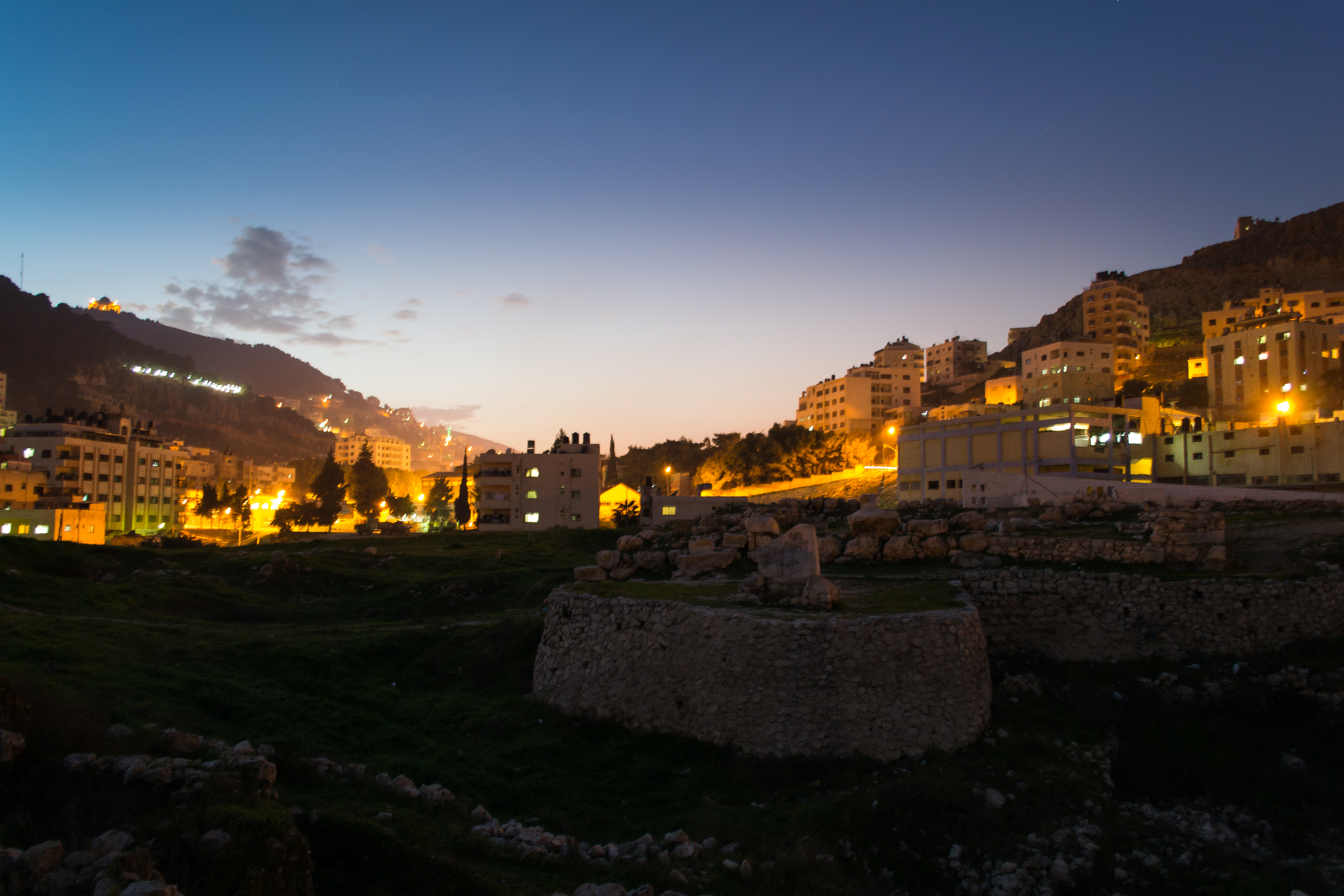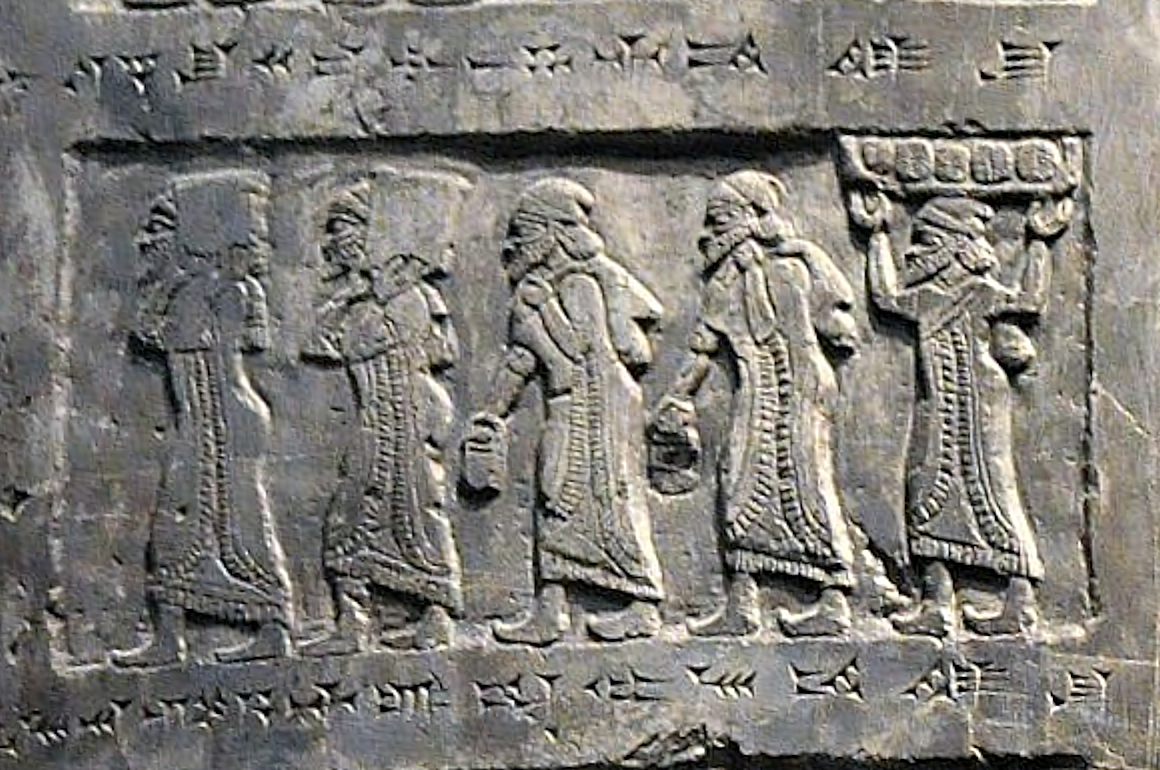|
Samaritan
Samaritans (; ; ; ), are an ethnoreligious group originating from the Hebrews and Israelites of the ancient Near East. They are indigenous to Samaria, a historical region of History of ancient Israel and Judah, ancient Israel and Judah that comprises the northern half of what is the West Bank in Palestine. They are adherents of Samaritanism, an Abrahamic religions, Abrahamic, monotheistic, and ethnic religion that developed alongside Judaism. According to their tradition, the Samaritans are descended from the Israelites who, unlike the Ten Lost Tribes of the Twelve Tribes of Israel, were not subject to the Assyrian captivity after the northern Kingdom of Israel (Samaria), Kingdom of Israel was destroyed and annexed by the Neo-Assyrian Empire around 720 BCE. Regarding the Samaritan Pentateuch as the unaltered Torah, the Samaritans view the Jews as close relatives but claim that Judaism fundamentally alters the original Yahwism, Israelite religion. The most notable theological ... [...More Info...] [...Related Items...] OR: [Wikipedia] [Google] [Baidu] |
Samaritanism
Samaritanism (; ) is an Abrahamic monotheistic ethnic religion. It comprises the collective spiritual, cultural, and legal traditions of the Samaritan people, who originate from the Hebrews and Israelites and began to emerge as a relatively distinct group after the Kingdom of Israel was conquered by the Neo-Assyrian Empire during the Iron Age. Central to the faith is the Samaritan Pentateuch, which Samaritans believe is the original and unchanged version of the Torah. Although it developed alongside and is closely related to Judaism, Samaritanism asserts itself as the truly preserved form of the monotheistic faith that the Israelites adopted under Moses. Samaritan belief also holds that the Israelites' original holy site was Mount Gerizim, near Nablus, and that Jerusalem only attained importance under Israelite dissenters who had followed Eli to the city of Shiloh; the Israelites who remained at Mount Gerizim would become the Samaritans in the Kingdom of Israel, wherea ... [...More Info...] [...Related Items...] OR: [Wikipedia] [Google] [Baidu] |
Samaritan Hebrew
Samaritan Hebrew () is a reading tradition used liturgically by the Samaritans for reading the Biblical Hebrew, Ancient Hebrew language of the Samaritan Pentateuch. For the Samaritans, Ancient Hebrew ceased to be a spoken everyday language. It was succeeded by Samaritan Aramaic, which itself ceased to be a spoken language sometime between the 10th and 12th centuries and was succeeded by Levantine Arabic (specifically, the Samaritan variety of Palestinian Arabic. The phonology of Samaritan Hebrew is very similar to that of Samaritan Arabic and is used by the Samaritans in prayer. Today, the spoken vernacular among Samaritans is evenly split between Modern Hebrew and Samaritan Arabic, depending on whether they reside in Holon or Kiryat Luza History and discovery The early history of Samaritan Hebrew is poorly documented, though it cannot be easily associated with early Israelian Hebrew. Because of the relatively late divergence of Samaritanism from mainstream Judaism its only by ... [...More Info...] [...Related Items...] OR: [Wikipedia] [Google] [Baidu] |
Mount Gerizim
Mount Gerizim ( ; ; ; , or ) is one of two mountains in the immediate vicinity of the State of Palestine, Palestinian city of Nablus and the biblical city of Shechem. It forms the southern side of the valley in which Nablus is situated, the northern side being formed by Mount Ebal. The mountain is one of the highest peaks in the West Bank and rises to above sea level, lower than Mount Ebal. The mountain is particularly steep on the northern side, is sparsely covered at the top with shrubbery, and lower down there is a spring (hydrology), spring with a high yield of fresh water.''Jewish Encyclopedia'' For the Samaritans, Samaritan people, most of whom live around it, Mount Gerizim is considered the holiest place on Earth. The mountain is mentioned in the Bible as the place where, upon first entering the Promised Land after the Exodus, the Israelites performed ceremonies of blessings, as they had been instructed by Moses. Mount Gerizim is sacred to the Samaritans, who regard it ... [...More Info...] [...Related Items...] OR: [Wikipedia] [Google] [Baidu] |
Samaria
Samaria (), the Hellenized form of the Hebrew name Shomron (), is used as a historical and Hebrew Bible, biblical name for the central region of the Land of Israel. It is bordered by Judea to the south and Galilee to the north. The region is known to the Palestinians in Arabic under two names, Samirah (, ''as-Sāmira''), and Mount Nablus (جَبَل نَابُلُس, ''Jabal Nābulus''). The first-century historian Josephus set the Mediterranean Sea as its limit to the west, and the Jordan Rift Valley, Jordan River as its limit to the east. Its territory largely corresponds to the Hebrew Bible, biblical allotments of the tribe of Ephraim and the western half of Tribe of Manasseh, Manasseh. It includes most of the region of the ancient Kingdom of Israel (Samaria), Kingdom of Israel, which was north of the Kingdom of Judah. The border between Samaria and Judea is set at the latitude of Ramallah. The name "Samaria" is derived from the Samaria (ancient city), ancient city of Sam ... [...More Info...] [...Related Items...] OR: [Wikipedia] [Google] [Baidu] |
Nablus
Nablus ( ; , ) is a State of Palestine, Palestinian city in the West Bank, located approximately north of Jerusalem, with a population of 156,906. Located between Mount Ebal and Mount Gerizim, it is the capital of the Nablus Governorate and a commercial and cultural centre of the State of Palestine, home to An-Najah National University, one of the largest Palestinian institutions of higher learning, and the Palestine Exchange, Palestine Stock Exchange.Amahl Bishara, ‘Weapons, Passports and News: Palestinian Perceptions of U.S. Power as a Mediator of War,’ in John D. Kelly, Beatrice Jauregui, Sean T. Mitchell, Jeremy Walton (eds.''Anthropology and Global Counterinsurgency,''pp.125-136 p.126. Nablus is under the administration of the Palestinian National Authority (PNA). The modern name of the city can be traced back to the Roman Empire, Roman period, when it was named by Roman emperor Vespasian in 72 CE. During the Byzantine Empire, Byzantine period, conflict between the ci ... [...More Info...] [...Related Items...] OR: [Wikipedia] [Google] [Baidu] |
Israelites
Israelites were a Hebrew language, Hebrew-speaking ethnoreligious group, consisting of tribes that lived in Canaan during the Iron Age. Modern scholarship describes the Israelites as emerging from indigenous Canaanites, Canaanite populations and other peoples.Mark Smith in "The Early History of God: Yahweh and Other Deities of Ancient Israel" states "Despite the long regnant model that the Canaanites and Israelites were people of fundamentally different culture, archaeological data now casts doubt on this view. The material culture of the region exhibits numerous common points between Israelites and Canaanites in the Iron I period (c. 1200–1000 BCE). The record would suggest that the Israelite culture largely overlapped with and derived from Canaanite culture ... In short, Israelite culture was largely Canaanite in nature. Given the information available, one cannot maintain a radical cultural separation between Canaanites and Israelites for the Iron I period." (pp. ... [...More Info...] [...Related Items...] OR: [Wikipedia] [Google] [Baidu] |
Samaritan Aramaic
Samaritan Aramaic was the dialect of Aramaic used by the Samaritans in their sacred and scholarly literature. This should not be confused with Samaritan Hebrew, the language of the Samaritan Pentateuch. Samaritan Aramaic ceased to be a spoken language some time between the 10th and the 12th centuries, with Samaritans switching to Palestinian Arabic as their vernacular. In form, Samaritan Aramaic resembles the Aramaic of the Targumim, and is written in the Samaritan alphabet. Important works written in it include the translation of the Samaritan Pentateuch, legal, exegetical and liturgical texts. Sample Exodus XX.1-6: # # # # # # Notice the similarities with Judeo-Aramaic as found in Targum Onqelos to this same passage (some expressions below are paraphrased, not literally translated): # ''Umalleil Adonai yat kol pitgamayya ha'illein lemeimar'' # ''Ana Adonai elahach de'appeiktach me'ar'a deMiṣrayim mibbeit avduta'' # ''La yihvei lach elah achoran, bar minni'' ... [...More Info...] [...Related Items...] OR: [Wikipedia] [Google] [Baidu] |
Passover (Samaritan Holiday)
Passover, or Pesach in Hebrew, is a significant religious holiday in Samaritanism, commemorating the Israelites' exodus from Egypt and their liberation from slavery. The Samaritan Passover is celebrated every spring with a pilgrimage to and sheep sacrifice atop Mount Gerizim, the holiest site in the Samaritan religion. This ritual is a direct observance of the commandments found in Exodus 12, and it involves the slaughtering of sheep, dabbing the animals' blood on the participants' foreheads, and roasting the meat for the Passover meal. Observances Samaritans observe Passover with a pilgrimage to Mount Gerizim, their holiest site, where a central sacrificial ceremony takes place. This practice directly follows the instructions outlined in Exodus 12, involving the slaughtering of sheep, marking participants' foreheads with the animal's blood, and roasting the meat for a communal feast. The sacrifice and blood-smearing symbolize the Israelites' marking of their doorposts in Exodus ... [...More Info...] [...Related Items...] OR: [Wikipedia] [Google] [Baidu] |
Shechem
Shechem ( ; , ; ), also spelled Sichem ( ; ) and other variants, was an ancient city in the southern Levant. Mentioned as a Canaanite city in the Amarna Letters, it later appears in the Hebrew Bible as the first capital of the Kingdom of Israel (Samaria), Kingdom of Israel following the split of the Kingdom of Israel (united monarchy), United Monarchy. According to , it was located in the tribal territorial allotment of the tribe of Ephraim. Shechem declined after the fall of the Kingdom of Israel (Samaria), northern Kingdom of Israel. The city later regained its importance as a prominent Samaritans, Samaritan center during the Hellenistic Palestine, Hellenistic period. Traditionally associated with the city of Nablus, Shechem is now identified with the nearby site of Tell Balata in the Balata al-Balad suburb of the West Bank. Geographical position Shechem's position is indicated in the Hebrew Bible: it lay north of Bethel and Shiloh (Biblical city), Shiloh, on the high road ... [...More Info...] [...Related Items...] OR: [Wikipedia] [Google] [Baidu] |
Ten Lost Tribes
The Ten Lost Tribes were those from the Twelve Tribes of Israel that were said to have been exiled from the Kingdom of Israel (Samaria), Kingdom of Israel after it was conquered by the Neo-Assyrian Empire around 720 BCE. They were the following: Tribe of Reuben, Reuben, Tribe of Simeon, Simeon, Tribe of Dan, Dan, Tribe of Naphtali, Naphtali, Tribe of Gad, Gad, Tribe of Asher, Asher, Tribe of Issachar, Issachar, Tribe of Zebulun, Zebulun, Tribe of Manasseh, Manasseh, and Tribe of Ephraim, Ephraim – all but Tribe of Judah, Judah and Tribe of Benjamin, Benjamin, both of which were based in the neighbouring Kingdom of Judah, and therefore survived until the Siege of Jerusalem (587 BC), Babylonian siege of Jerusalem in 587 BCE. Alongside Judah and Benjamin was part of the Tribe of Levi, which was not allowed land tenure, but received Levitical city, dedicated cities. The exile of Israel's population, known as the Assyrian captivity, was an instance of the long-standing resettlement ... [...More Info...] [...Related Items...] OR: [Wikipedia] [Google] [Baidu] |
Semitic Languages
The Semitic languages are a branch of the Afroasiatic languages, Afroasiatic language family. They include Arabic, Amharic, Tigrinya language, Tigrinya, Aramaic, Hebrew language, Hebrew, Maltese language, Maltese, Modern South Arabian languages and numerous other ancient and modern languages. They are spoken by more than 330 million people across much of Western Asia, West Asia, North Africa, the Horn of Africa, Malta, and in large Immigration, immigrant and Expatriate, expatriate communities in North America, Europe, and Australasia. The terminology was first used in the 1780s by members of the Göttingen school of history, who derived the name from Shem, one of the three Generations of Noah, sons of Noah in the Book of Genesis. Semitic languages List of languages by first written account, occur in written form from a very early historical date in West Asia, with East Semitic languages, East Semitic Akkadian language, Akkadian (also known as Ancient Assyrian language, Assyrian ... [...More Info...] [...Related Items...] OR: [Wikipedia] [Google] [Baidu] |





